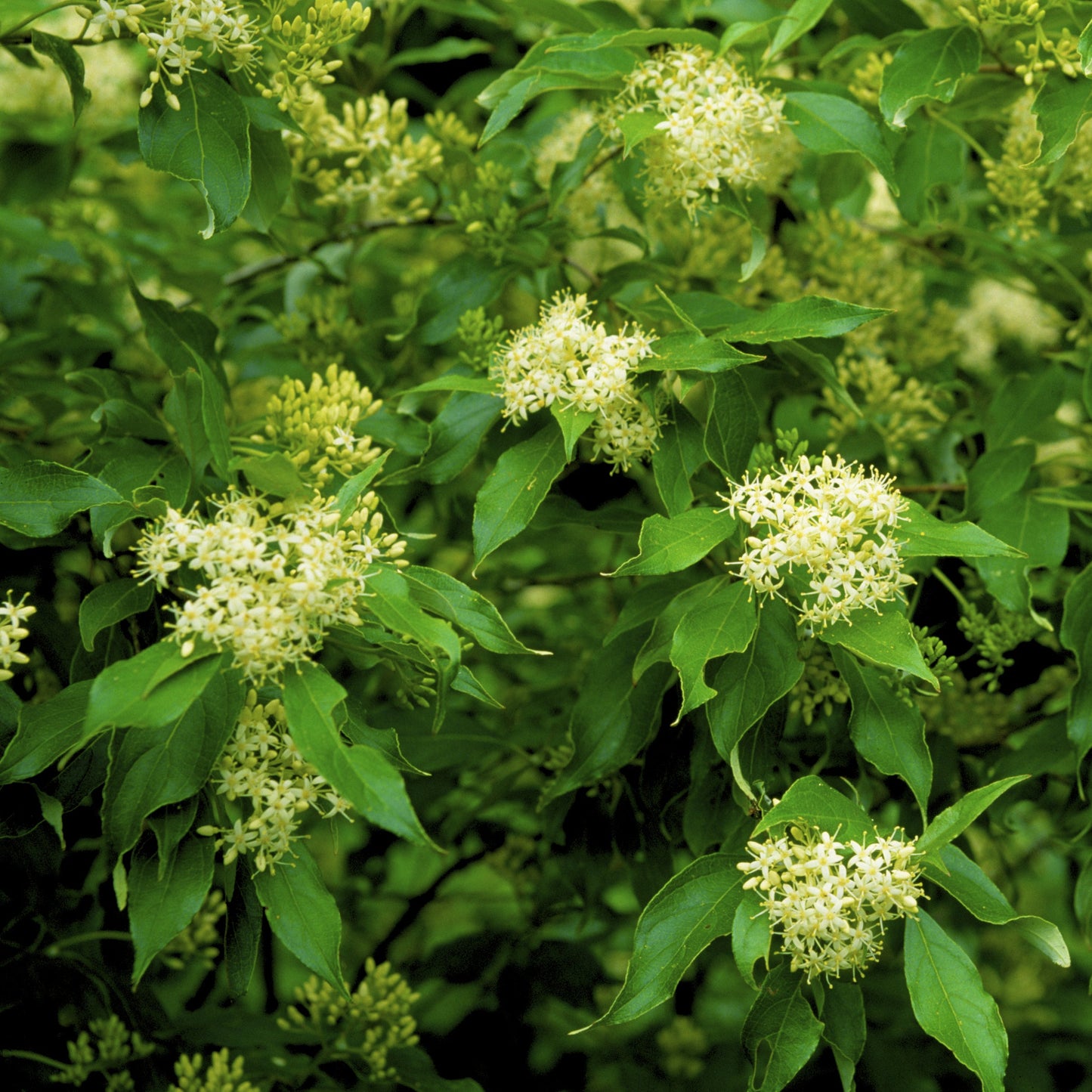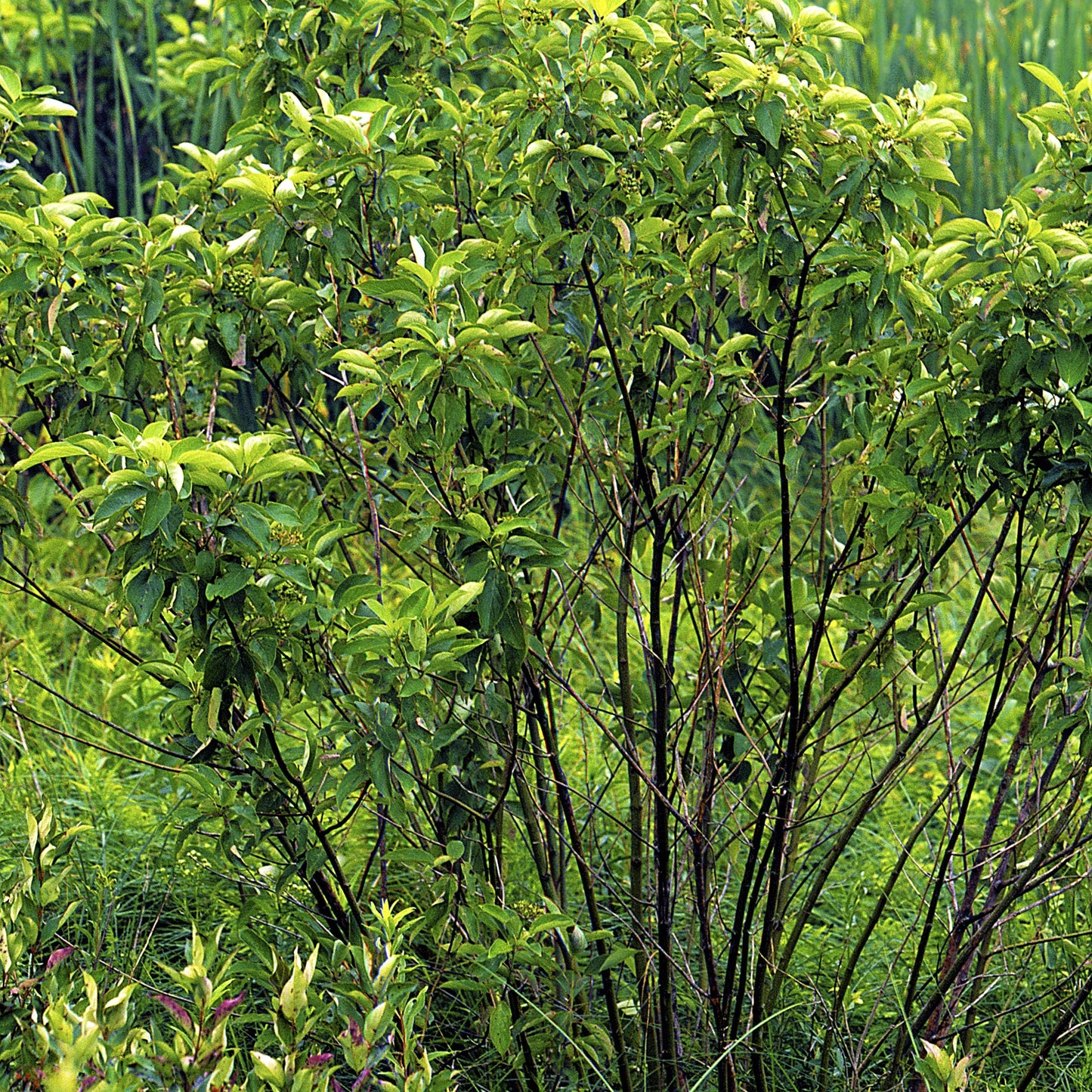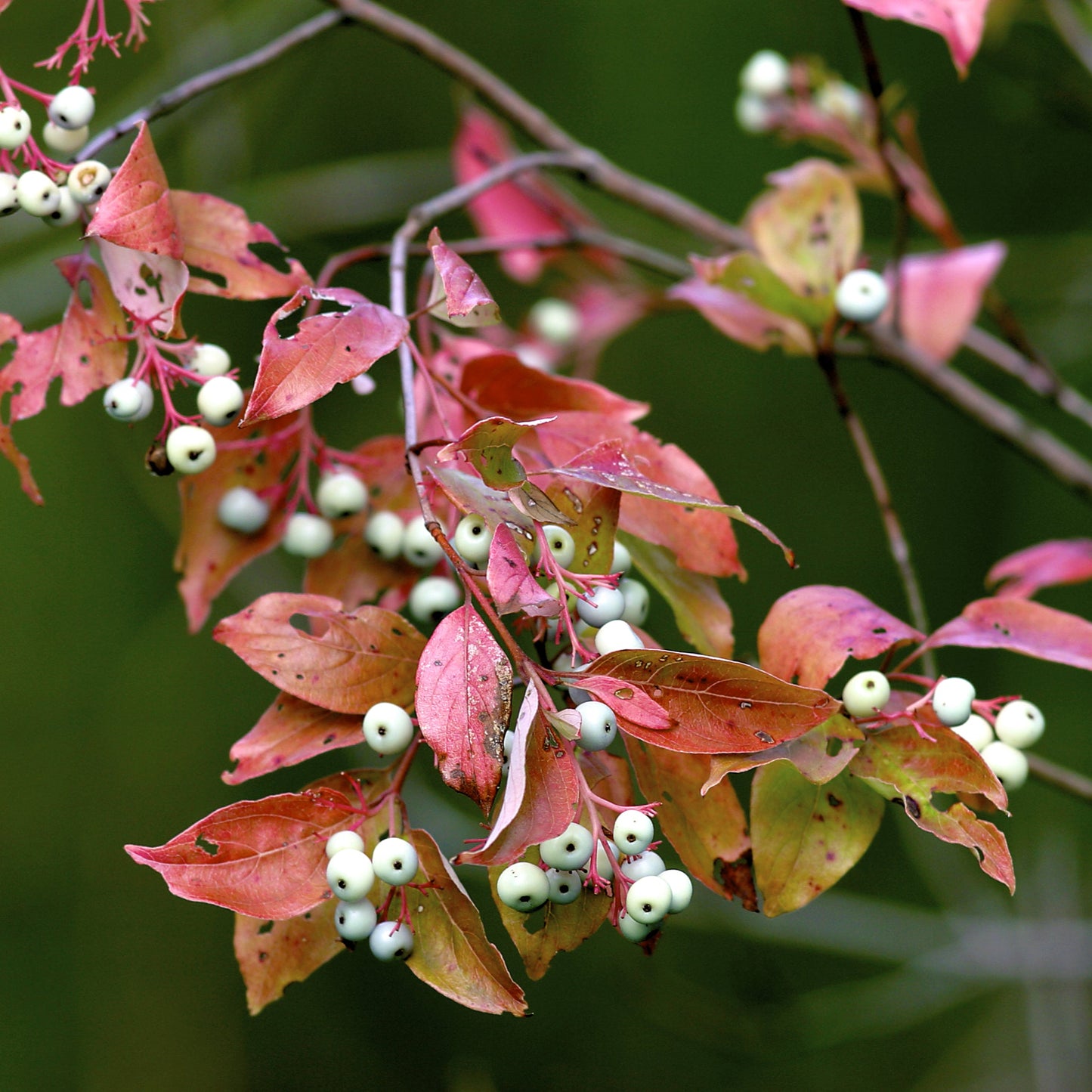Limited Quantities - Reserve Now For Fall
-
Beginner Zones 3-8

-

-

Grey Dogwood Tree
Grey Dogwood Tree
Couldn't load pickup availability
Cornus racemosa
The Gray Dogwood Tree is a hardy, multi-season deciduous shrub or small tree known for its attractive white flowers, striking white berries, and stunning reddish-purple fall foliage. This fast-growing, low-maintenance native plant is ideal for wildlife gardens, erosion control, and naturalized landscapes. With its ability to thrive in a variety of soils and growing conditions, the Gray Dogwood is a versatile and valuable addition to any landscape.
Gray Dogwood Tree Overview
| Attribute | Details |
|---|---|
| Variety | Rooted |
| Botanical Name | Cornus racemosa |
| Common Names | Gray Dogwood, Panicled Dogwood |
| Mature Height | 10-15 feet |
| Mature Width | 10-15 feet |
| Growth Rate | Moderate to Fast (1-2 feet per year) |
| Lifespan | 40-50 years |
| USDA Hardiness Zones | 3-8 |
| Sun Preference | Full sun to partial shade |
| Soil Type | Well-drained, loamy, sandy, or clay soils |
| Soil pH | Slightly acidic to neutral (5.5-7.5) |
| Water Needs | Moderate; drought-tolerant once established |
| Flowering Season | Late spring to early summer (May-June) |
| Flower Color | White, fragrant clusters |
| Fruit | Small white berries on red stems (late summer to fall) |
| Fall Foliage | Reddish-purple |
| Wildlife Attraction | Birds, pollinators, small mammals |
| Growth Habit | Multi-stemmed shrub or small tree with spreading form |
| Self-Pollinating? | Yes |
| Landscape Uses | Privacy hedges, erosion control, wildlife habitat, naturalized plantings |
| Maintenance Level | Low |
Environmental Benefits
🦋 Pollinator & Wildlife Support – Produces nectar-rich flowers that attract bees and butterflies, while its berries provide food for birds and small mammals.
🌿 Erosion Control & Soil Stability – Thrives in diverse soil conditions, making it ideal for stabilizing slopes and preventing erosion.
🌳 Air Purification & Carbon Sequestration – Helps remove pollutants from the air while improving the surrounding ecosystem.
🌞 Drought & Adaptability – Once established, it thrives in both wet and dry conditions, making it an excellent choice for urban and rural landscapes.
Pros & Cons
| Pros | Cons |
|---|---|
| Fast-growing and provides excellent wildlife habitat | Can spread aggressively through suckering if not maintained |
| Attractive flowers, berries, and fall foliage | Berries are not edible for humans |
| Resistant to most pests and diseases | Requires occasional pruning to maintain shape |
| Tolerates a wide range of soil and moisture conditions | Not ideal for formal landscapes due to its spreading habit |
| Great for erosion control and wetland restoration | May require regular watering during establishment |
Planting & Care Guide
- Spacing: Plant 6-12 feet apart for hedges or 10-15 feet apart for individual specimens
- Soaking: Soak bare root in water for 6-12 hours before planting
- Planting Depth: Dig a hole twice the width of the root system, ensuring roots are level with the soil surface
- Mulching: Apply a 2-3 inch layer of mulch to retain moisture and suppress weeds
- Pruning: Prune in late winter or early spring to control spreading and maintain shape
- Fertilization: Apply a balanced fertilizer in early spring to encourage growth
- Watering: Water regularly until established, then reduce as the shrub matures
The Gray Dogwood Tree is a versatile, resilient, and ecologically beneficial plant that provides seasonal beauty, erosion control, and habitat for wildlife. Whether planted as a privacy hedge, erosion barrier, or naturalized feature, this fast-growing and low-maintenance tree is a great addition to any landscape.
Share






